The topic of distinguishing lab-grown diamonds from natural ones is a hot discussion in the diamond industry. It’s not only buyers who are curious about the differences, but also jewelers themselves.
Lab-grown diamonds have gained attention in recent years, but they often face a stigma that discourages many people. The perception that these diamonds are somehow less genuine stems from their creation in laboratories, leading to the assumption that they are not natural.
While skepticism towards lab-grown diamonds is natural, it is important to debunk the misconception that they are not real diamonds. In fact, lab-grown diamonds are just as authentic as those mined from the earth.
Furthermore, differentiating between natural and lab-grown diamonds is more challenging than one might expect. This article will delve into the world of lab-grown diamonds and compare them to their natural counterparts. Prepare to be surprised by some eye-opening facts.
DESIGN YOUR OWN ENGAGEMENT RING: START WITH A SETTING OR START WITH A DIAMOND. IT’S REALLY UP TO YOU!
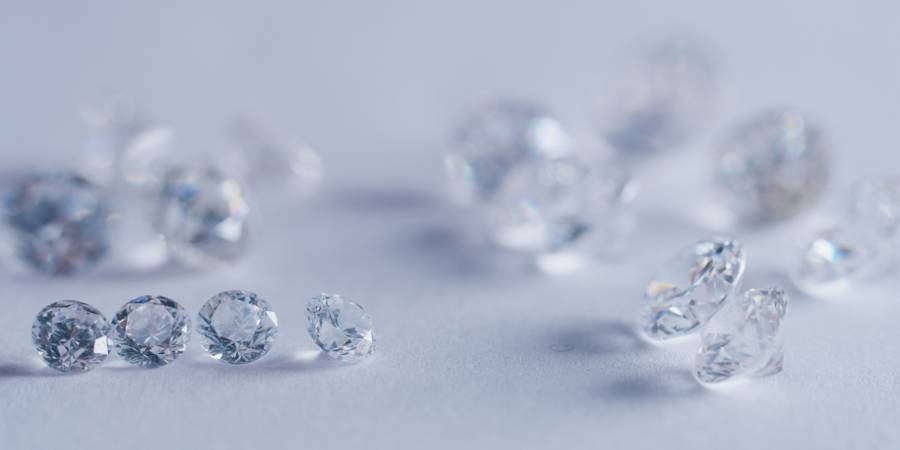
What Are Lab-grown Diamonds?
Lab-grown diamonds, also known as synthetic diamonds, lab-created diamonds, or artificial diamonds, are diamonds produced in laboratories using advanced technology. It is important to note that lab-grown diamonds are distinct from diamond simulants.
Lab-grown diamonds are essentially the same as mined diamonds, with the only difference being their origin. In other words, diamonds created in labs are genuine and indistinguishable from natural diamonds. Diamond simulants, such as zircon, cubic zirconia, moissanite, and white sapphire, are visually different and lack the clarity and brilliance of natural or lab-grown diamonds. Identifying a diamond simulant from a real diamond is relatively easy and does not require professional expertise.
However, differentiating between lab-grown diamonds and natural diamonds can be extremely challenging. The stigma surrounding lab-grown diamonds as being inferior or not genuine is unjustified. Just because a diamond is created artificially does not mean it possesses lower quality than a naturally mined diamond.
The process of creating lab-grown diamonds involves replicating the conditions in which natural diamonds form. Natural diamonds are formed over billions of years under intense heat and pressure deep within the Earth’s crust. Lab-grown diamonds follow the same principles but are cultivated in a controlled laboratory environment. Small diamond seeds, which are existing pieces of diamonds, are placed in a chamber where they can grow. Cutting-edge technology is employed to simulate the high temperatures and pressures found deep within the Earth.
There are two main methods used to grow diamonds in labs: the high-pressure, high-temperature (HPHT) method and the chemical vapor deposition (CVD) method. The HPHT method involves subjecting the diamond seeds to temperatures of approximately 1500 degrees Celsius and pressures of about 103400 Bar to stimulate diamond growth. On the other hand, the CVD method utilizes lower heat and pressure by introducing a mixture of gases that break down and transform into crystalline carbon.
Unlike natural diamonds, which require billions of years to form, lab-grown diamonds can be produced in a much shorter timeframe. Typically, it takes between 6 and 10 weeks for lab-grown diamonds to develop. The extended formation time required for natural diamonds is one of the reasons they hold higher value compared to lab-grown diamonds.

Differences Between Natural and Lab-grown Diamonds
Now that we have established the similarity between natural and lab-grown diamonds, let’s discuss how to determine if a diamond is lab-grown.
Visual inspection alone will not provide conclusive evidence of whether a diamond is natural or lab-grown. Both types exhibit the same brilliance and sparkle that are characteristic of diamonds. However, there are certain indicators that can help distinguish lab-grown diamonds. Most lab-grown diamonds have a laser inscription on the girdle, which can be seen under a magnifying glass. This inscription is essential because the value of natural and lab-grown diamonds differs. Without the inscription, it is challenging to determine the origin of the diamond. Additionally, the lab report number inscribed on the girdle can be used to identify a lab-grown diamond. By visiting the laboratory’s website and entering the inscribed number, you can access information about the diamond, including whether it is natural or lab-grown. If there are no inscriptions, it is advisable to take the diamond to a gemological laboratory for professional identification.
In terms of chemical composition, lab-grown diamonds have the same structure as natural diamonds. However, certain inclusions can help identify lab-grown diamonds that lack a girdle inscription. Nitrogen and boron inclusions are commonly found in natural diamonds but absent in lab-grown diamonds. These inclusions may be visible to the naked eye or require expert observation. Additionally, lab-grown diamonds may contain metallic inclusions due to their growth process in molten metal solutions, whereas natural diamonds do not exhibit such inclusions.
It is important to note that only professionals, such as gemologists, can accurately identify these chemical differences. This distinction is particularly relevant when it comes to fancy colored diamonds, as lab-grown diamonds can also exhibit nitrogen (yellow) or boron (blue) inclusions. Therefore, the presence of nitrogen or boron does not necessarily indicate a natural diamond.
Regarding durability, there is a misconception that lab-grown diamonds are not as hard or durable as natural diamonds. This misconception stems from the perception that artificially made products are of lower quality. However, when it comes to diamonds, this assumption is not valid. Lab-grown diamonds are equally durable, timeless, and long-lasting compared to natural diamonds.
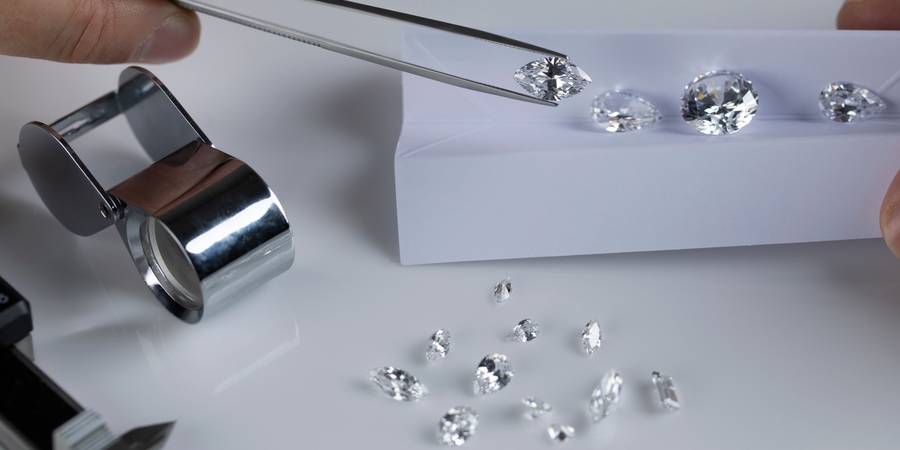
Price of Lab-grown Diamonds
Why is there a noticeable price difference between natural and lab-grown diamonds despite their similarities?
The primary reason for the price disparity is the difference in formation time. Lab-grown diamonds can be created within a matter of weeks, while natural diamonds undergo a natural formation process that spans billions of years. This stark contrast in production time significantly affects the pricing of lab-grown diamonds, making them more affordable compared to natural diamonds.
Another significant factor contributing to the price difference is the relatively lower demand for lab-grown diamonds. Although the demand for lab-grown diamonds has seen some growth in recent years, they have not yet achieved the widespread recognition and reputation that would drive higher demand and subsequently increase their price.
On average, lab-grown diamonds cost around 20% to 50% of what you would pay for a naturally mined diamond. The price difference can be even more pronounced for lab-grown fancy colored diamonds.
To provide specific figures, the price per carat for lab-grown diamonds ranges from approximately $500 to $1500, whereas natural diamonds can cost anywhere from $2000 to $18000 per carat.
Therefore, if you come across a diamond with an unusually low price that seems too good to be true, it is likely a lab-grown diamond.
Are lab-grown diamonds too expensive?
Despite their lower cost compared to natural diamonds, lab-grown diamonds can still be considered relatively expensive for many individuals. The production of lab-grown diamonds requires specialized equipment, including machinery and diamond cutters, as well as skilled experts overseeing the growth process. These labs need to maintain their equipment regularly and employ highly experienced staff. In essence, the production of lab-grown diamonds is neither a cheap nor an easy process, which contributes to their pricing.
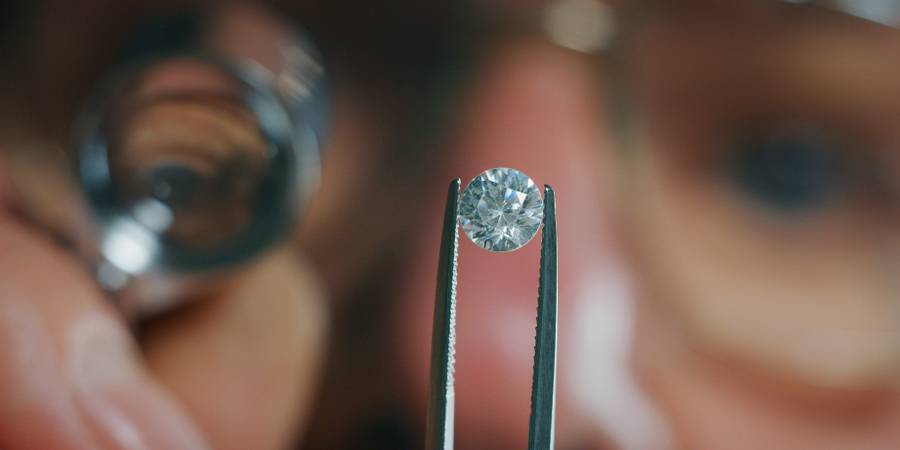
Why Do Lab-grown Diamonds Have A Bad Reputation?
Lab-grown diamonds often carry a negative perception among many individuals due to a lack of awareness regarding the similarities between synthetic and naturally colored diamonds in terms of their properties.
There is a perception that lab-grown diamonds are tacky, and while there is some truth to this perception, it is not applicable to all artificial diamonds. Similarly, not all natural diamonds can be categorized in the same way.
Furthermore, lab-created diamonds are sometimes deemed inappropriate for engagement rings or gifts. This perception stems from their lower price, leading many to believe that lab-grown diamonds are a cheap and inferior substitute for natural diamonds.
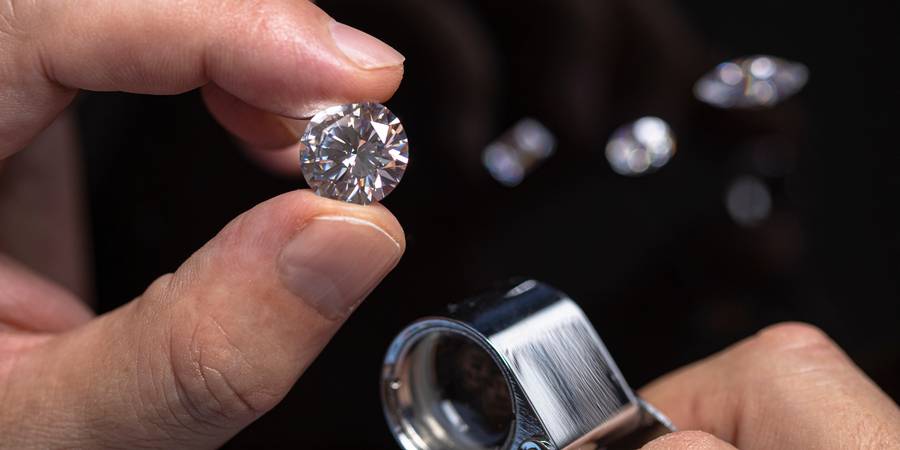
Can Jewelers Tell If A Diamond Is Lab-grown?
Determining whether a diamond is lab-grown or natural can be a challenge for jewelers, and their ability to do so largely depends on the presence of a girdle inscription, lab report number, or certificate. Without any of these indicators, most jewelers would be unable to ascertain the origin of the diamond, much like anyone else.
Only jewelers who have undergone gemological training may possess the knowledge and expertise to provide insights into the diamond’s origin.
Even the most skilled jewelers cannot identify a lab-grown diamond with the naked eye alone. They would need to employ a magnifying glass or microscope for a closer examination.
However, even with extensive knowledge and advanced magnification tools, it is impossible to determine with absolute certainty whether a diamond is 100% natural or lab-grown.
To obtain a definitive answer regarding the diamond’s origin, jewelers must send the diamond to a reputable gemological institute for thorough laboratory examination.
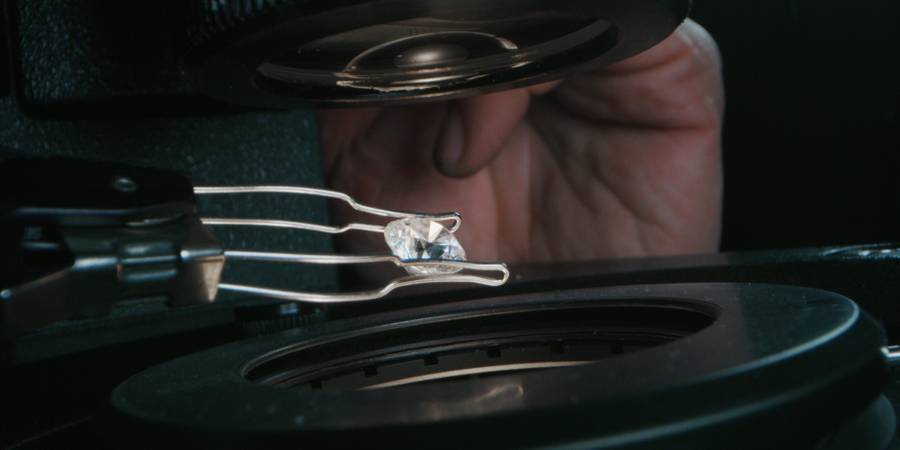
GIA Certificate for Lab-grown Diamonds
Yes, GIA (Gemological Institute of America) does provide certificates for lab-grown diamonds.
The grading system for lab-created diamonds follows the same principles as for natural diamonds. The 4Cs – cut, color, carat, and clarity – are used to assess the quality and determine the value of lab-grown diamonds.
However, it’s important to note that even a lab-grown diamond of the highest grade will still be priced lower than a natural diamond of the same size but lower grade.
Before 2019, GIA used the term “synthetic” to describe lab-grown diamonds in their grading reports. However, this term is no longer used, indicating that GIA recognizes lab-grown diamonds as genuine diamonds.
Additionally, the GIA report provides information about the method used to grow the diamond, includes a description of its color and clarity, and indicates whether any color treatments have been applied to the diamond.
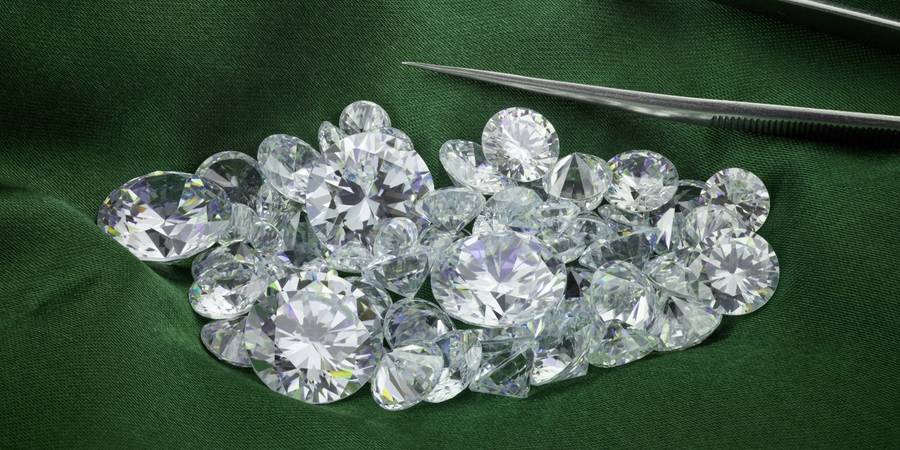
Can Lab-grown Get Appraised and Insured?
Lab-grown diamonds, similar to natural diamonds, can undergo the process of appraisal and can also be insured.
There is an ongoing debate about whether lab-grown diamonds should be appraised. The value of a natural diamond typically decreases soon after its purchase, which raises concerns about the value retention of lab-grown diamonds.
However, there are valid reasons to consider getting your lab-grown diamond appraised. It is generally advisable to have any diamond, regardless of its origin, appraised for various purposes. You never know when you might require an appraisal for insurance, documentation, or other purposes in the future.
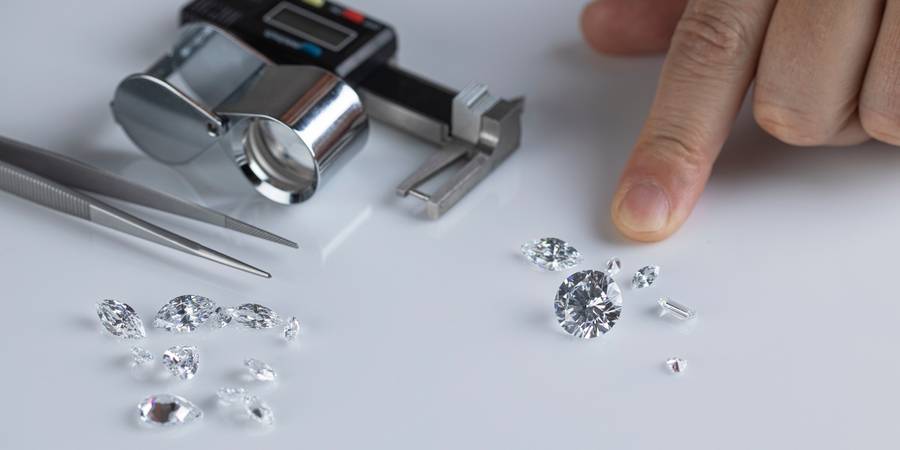
Conclusion
Differentiating between lab-grown and natural diamonds is an extremely challenging task, even for professionals. Lab-grown diamonds possess the same visual, physical, and chemical characteristics as natural diamonds.
While there may be slight differences in inclusions that can provide clues about a diamond’s origin, only gemologists working in specialized laboratories can definitively determine if a diamond is 100% natural or artificially created.
Attempting to pass off a lab-grown diamond as a natural one is not only unethical but also fraudulent. It would require deceiving someone into believing it is a natural diamond without providing any supporting evidence.
Most individuals, particularly jewelers, would insist on having proper documentation such as a certificate to verify the authenticity and origin of a diamond.
Lab-grown diamonds can undergo grading, appraisal, and insurance processes just like natural diamonds. These documents provide comprehensive information about the diamond, including its origin and other relevant characteristics.
We hope you found this article informative and that it has equipped you with the knowledge to identify lab-grown diamonds.


